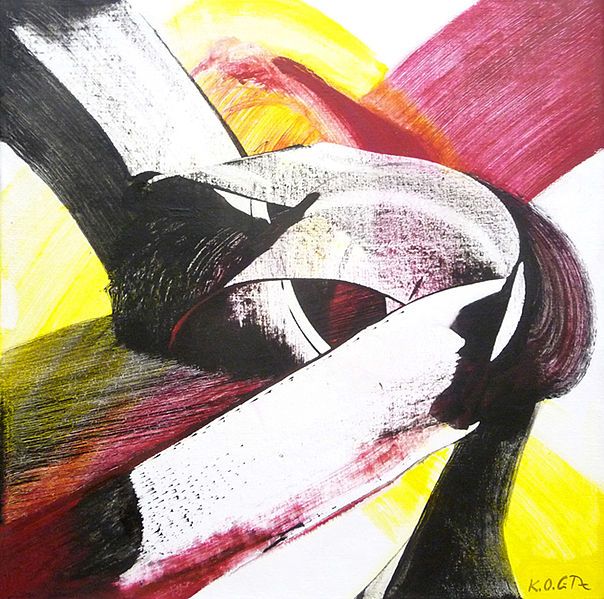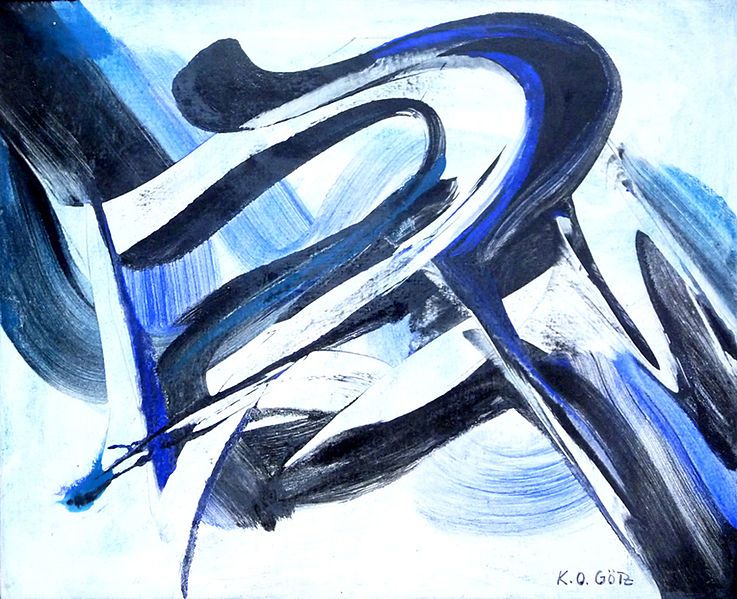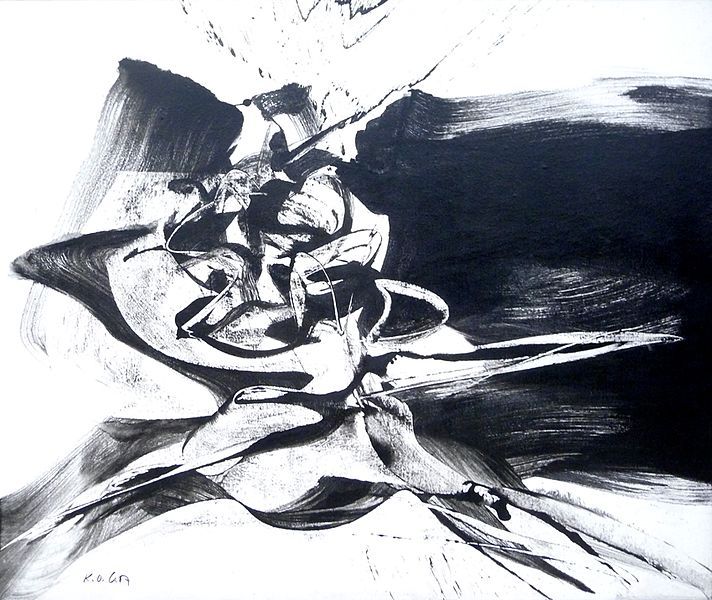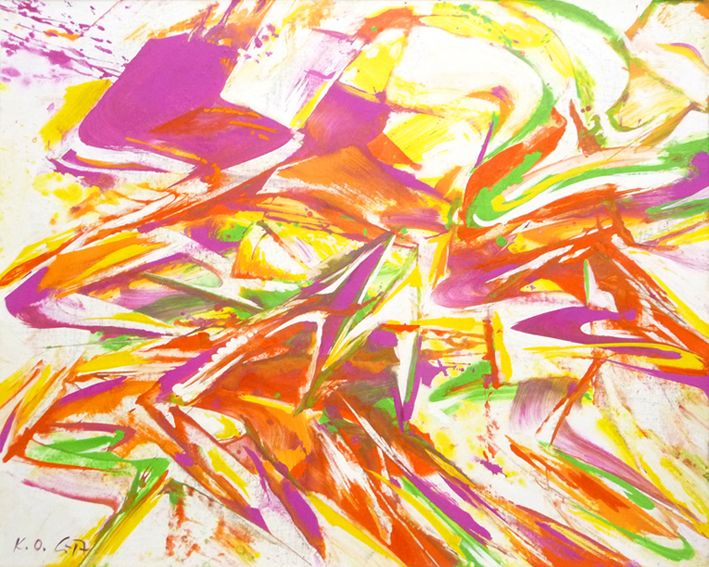German Abstract Art Pioneer K.O. Götz Dies at 103
His broad strokes and large-scale paintings helped re-establish Germany as post-war cultural hub
Over the weekend, German abstract art legend Karl Otto "K.O." Götz died at the age of 103, reports Deutsche Welle. Born in the city of Aachen in 1914, Götz's career mirrors the tumultuous history of Germany through the 20th century. In addition to his own work, he will also be remembered for his tutelage of postwar artists, helping launch the careers of many well-known contemporaries.
Der Spiegel reports that Götz first enrolled in a local art school in 1932 where he focused on Surrealism and avante-garde art styles. But by 1935, his favored styles of art were banned by the Nazis, who considered emerging trends like Surrealism, Cubism and Impressionism “degenerate art.”
DW reports that Götz continued to paint, making a living doing landscapes. According to Der Spiegel he was drafted into the Nazi war machine in 1936. Until 1938, he served in the Luftwaffe. During the war, he was based in Nazi-occupied Norway, where he served as a signal officer. In his free time, he continued to paint and experiment with new techniques.
Ingeborg Wiensowski at Der Spiegel reports that following the war, Götz found his artistic voice using wide brushes and pieces of wood as squegees to create spontaneous yet masterfully controlled large-scale canvases, a technique he began in 1952 and evolved throughout the rest of his life. His black-and-white paintings became a sensation among his contemporaries and established him as major post-war artist and leading light so of the “Deutsches Informel,” or informal art movement, which started in Germany and spread throughout Europe.
“After 1945, he was one of the artists who gave our country its cultural dignity back, and he was an important promoter of freedom,” Walter Smerling, director of the Museum Küppersmühle für Moderne Kunst, tells DW.
Between 1959 and 1979, Götz became an instructor at the Kunstakademie Düsseldorf. There he imparted his motto, "Abstrakt ist schöner," translated roughly as “Abstract is more beautiful,” to his students, who included artists such as Gerhard Richter, Sigmar Polke and Franz Erhard Walther.
In 2014, in celebration of his 100th birthday, several exhibits including shows at the Museum Küppersmühle in Duisburg and the Neue Nationalgalerie in Berlin were organized.
While the artist was blinded by glaucoma in his 90s, with the help of his wife, the artist Rissa, he continued creating new pieces, reports DW. One of most famous works, "Jonction III," painted to celebrate the reunification of Germany, is held today in the art collection of the Bundestag, the German Parliament.



